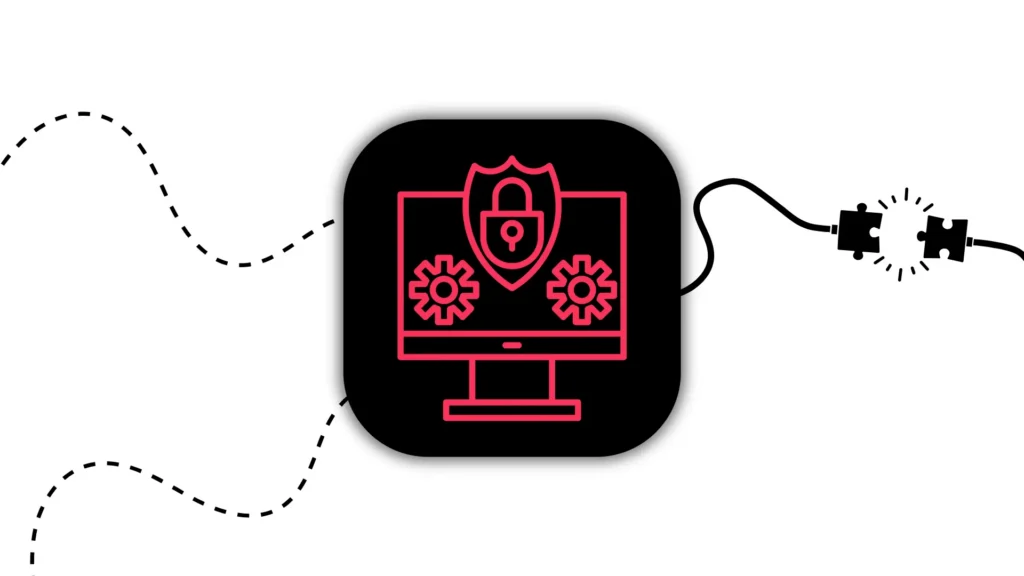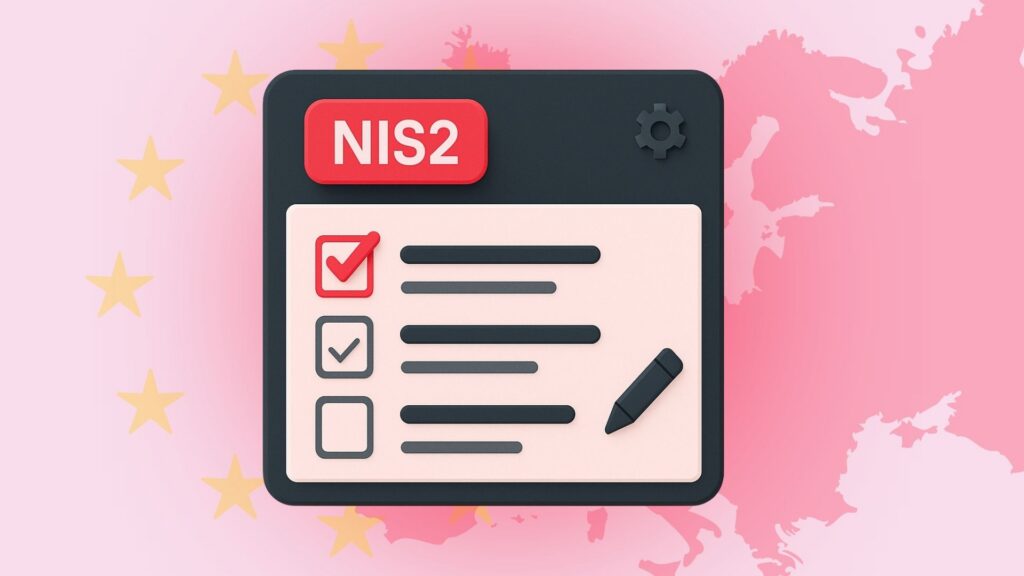Your company probably isn’t an IT-first company. But you still have systems, users, tools, and data, right?
Not to scare you or anything, but it does make you a great target.
From manufacturing lines to e-commerce platforms, most businesses rely on a digital infrastructure that holds it all together. And when that infrastructure is stressed or breached, it affects a lot more than just your IT.
Today, we’ll explore a way to actively test how secure your systems really are, before someone else does it for you.
We’ll explore the Penetration Testing, what it does, and how to know when it’s time to bring in professionals. No scare tactics or grand promises … Just clear advice for anyone responsible for keeping a business running in an increasingly digital world.
What is Penetration Testing?
Penetration testing, or Pen Testing for short, is a way to test how easy it would be for someone to break into your digital systems.
Think of it as hiring someone to try and hack you on purpose. The goal isn’t to cause damage. It’s to find weak spots, report them, and give possible solutions for fixing them.
Pen Testers don’t guess or assume. They simulate real-world attacks, using the same tools and methods that actual cybercriminals use. The only difference is, they’re not on the dark side.
Penetration testing can cover everything from your public website, to your internal systems, employee access points, cloud services, and even AI-powered tools you’ve recently plugged in.
If there’s a door or a window into your digital environment, a Pen Test will try to open it. We’ll explore the Pen Testing, what it does, and how to know when it’s time to bring in professionals. No scare tactics or grand promises… Just clear advice for anyone responsible for keeping a business running in an increasingly digital world.
Why everyone should pay close attention?
It doesn’t matter if you are a tech company, a car manufacturer, a retailer, or a public service. Today, every organization is a potential target.
Attackers are not just chasing tech giants or banks anymore. They are scanning across sectors, looking for any company that runs on digital systems. As you can imagine, in today’s world, that means nearly every business.
If you store customer data, run cloud services, integrate AI tools, or simply operate online, you are already part of the landscape they are trying to breach.
We have seen hospitals taken offline by ransomware. City governments were crippled for weeks. Manufacturers were forced to halt production because of attacks that started from a single compromised supplier. In 2024, major public services across Europe and North America faced cyberattacks that disrupted critical operations, despite heavy investments in cybersecurity.
The logic behind these attacks is simple. Criminals don’t always need to go after the hardest targets.
In many cases, they aim for organizations that have valuable systems but may not have the same hardened defenses. They count on you missing small details such as old test environments left running, a weak vendor connection, an unprotected AI.
The uncomfortable truth is this: it’s no longer a question of if someone will test your defenses. It’s when. Think of cybersecurity as operational hygiene. Just like you lock your doors and set up fire alarms, you now need to actively protect your digital environment.
It doesn’t take a genius-level hacker
Many breaches today don’t come from genius-level hackers. They come from opportunists.
Attackers run automated scans across thousands of systems. They usually look for easy wins. When they find an opening, they get in, lock things down, steal data, or quietly sit and watch until the moment is right.
We’ve seen this happen across industries.
A major company like Siemens lost control over operational data after vulnerabilities were found in their AMA Cloud API. Similarly, Neiman Marcus, one of the retail brands affected in the Snowflake breach, suffered data exposure after attackers exploited weaknesses in vendor and partner systems. The Infosys McCamish Systems breach showed how a large supply chain operation can be compromised. In this instance, millions of records were affected due to delayed detection and response.
These incidents are not isolated. Research shows there has been a staggering 3000% increase in API attacks, reflecting how rapidly attackers are shifting their focus toward weaker, often overlooked entry points.
Your business might be focused on production, logistics, sales, or omnichannel customer experience. But if it runs on digital systems, and let’s be honest, they all do, then your security is already part of the business. Considering the fact that most of our partnership network is in those shoes, we decided to acquire a cybersecurity company and invest in cybersecurity. That includes Pen Testing. The method that’s not just for tech companies but for any company that depends on tech.
What a Pen Test can actually reveal?
Penetration testing is about uncovering the things you didn’t know were there.
In most cases, companies are surprised by how small the entry points are. Here are just a few common issues a Pen Test can help you find:
- Misconfigured cloud storage. Think open access to sensitive files, backups, or logs sitting on cloud platforms without proper protection.
- Vulnerable login pages or admin panels. Outdated web systems, default URLs, or hidden access points that aren’t really hidden. Attackers can find and test them in minutes.
- Insecure employee devices or remote access. When people work from anywhere, they often connect through weak networks or unprotected devices. One employee’s laptop can become an easy doorway in.
- Weak passwords and reused credentials. Yes, this one still happens. A shocking number of systems still rely on weak passwords or credentials that show up in old data breaches.
- Shadow IT and unsanctioned tools. This one catches leaders off guard. Your teams might be using software or services that no one has officially approved or reviewed. This creates blind spots in your cybersecurity.
Each of these issues seems minor. But in the hands of an attacker, they can turn into downtime, data loss, or full system compromise.
The AI effect: New tech, new threats
Adding AI tools to your systems doesn’t just boost productivity. It expands your digital surface, and with that, your exposure to risk.
Generative AI platforms, large language models, and automation tools. These are all powerful. But they also come with vulnerabilities that many companies haven’t fully considered.
Here are a few examples:
- API abuse. Attackers can exploit weakly secured APIs used by AI tools to extract or manipulate data.
- Prompt injection. If your systems accept user inputs that reach an AI model, attackers can trick the model into revealing sensitive data or ignoring built-in restrictions.
- Model leakage. AI tools trained on internal or proprietary data can sometimes reveal that data in ways you didn’t intend.
- Access control issues. Who has access to the AI tool, and what can they do with it? Many companies can’t answer that clearly, and attackers are happy to find out for them.
Penetration testing helps spot these issues. It stress-tests the way AI tools are integrated into your stack and flags the risks that aren’t always visible during development.
If your team is moving fast with AI, and most are, Pen Testing is a simple way to make sure you’re not opening the wrong doors in the process.
When and how often should you run Pen Tests?
Your environment is always changing. New features go live, teams adopt new tools, people come and go, and systems connect in ways they didn’t before.
That’s why Pen Testing should be event-based, not calendar-driven.
The best times to run a Pen Test:
- Before launching a major update or product
- After migrating to the cloud or integrating third-party tools
- When onboarding a new external vendor with system access
- If you’re expanding AI-driven tools or automation platforms
- Following any significant organizational change, like a merger
Yes, regular testing still matters. At a minimum, once a year for smaller companies. But ideally, every six months, especially if you’re handling sensitive data or operating in industries with compliance requirements. If you’re subject to NIS2, or expect to be, Pen Testing can help demonstrate that your company is actively managing cybersecurity risk.
Quick wins and lesser-known tips
Here are a few practical takeaways companies often overlook, where Pen Tests reveal easy-to-fix vulnerabilities:
- Change your admin panel’s default URL
Leaving it at something like /admin or /login makes it the first thing automated bots try. Obscurity isn’t security, but it buys you time. - Remove old test environments
Staging sites, dev links, demo portals. If they’re live and forgotten, they’re unguarded back doors. - Check your suppliers’ access
You might be secure, but what about the vendor with access to your CRM or cloud storage? Attackers often go for the weakest link in the chain. - Audit your AI tools
Know which models you’re using, who can access them, and what data they touch. AI doesn’t magically secure itself. - LinkedIn is a goldmine for attackers
Hackers use public profiles to map out your org chart, identify IT admins or engineers, and craft targeted phishing emails. If your team is oversharing job details, they’re making the attacker’s job easier.
Don’t wait for a fire to check if the alarm works
The same should go for your cybersecurity.
Penetration Testing gives you a controlled way to find out how exposed you are, without the hard way. And while your internal team might know the system, that’s exactly why they might miss something.
Sometimes, the smartest move is letting someone else try to break in, especially when they’re on your side.
Consider leaving it to the experts. You’ll sleep better knowing you did.
Similar insights

Choosing the Right Tech Stack in Uncertain Times
25/11/2025
How to Pitch and Get Your Ideas Approved at Work
12/11/2025
12 AI Cyberattacks That Made CEOs Very Cautious
21/10/2025
14 Books Smart Tech Leaders Are Reading This Fall
07/10/2025
Protect Your Crown Jewels: The Heart of Your Cybersecurity
15/09/2025
How Renown Business Executives are Using AI?
12/08/2025
NIS2 Compliance: A Simple Guide to Get It Done Right
15/05/2025
NIS2 Directive Explained: What Your Business Needs to Do Now
29/04/2025
Net Group Expands into Germany and Acquires Cybersecurity Company
04/04/2025
Let the success
journey begin
Our goal is to help take your organization to new heights of success through innovative digital solutions. Let us work together to turn your dreams into reality.